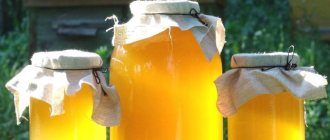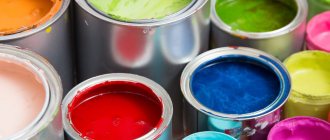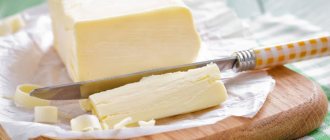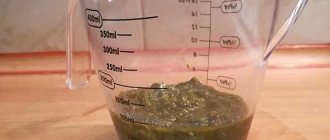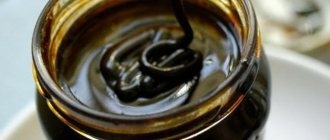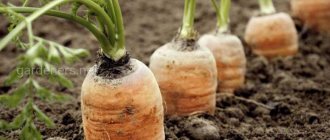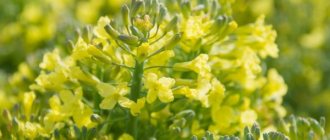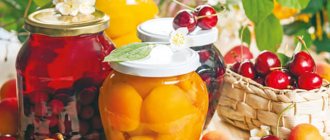What is mature honey? What is the danger of unripe honey?
Honey is considered mature when it contains no more than 20% moisture. A sign of honey maturity during pumping is that the honeycomb cells are 100% sealed with wax caps, but honeycombs that are more than 2/3 sealed are also allowed for pumping.
Many novice or unscrupulous beekeepers, fearing competition and trying to put their product up for sale as quickly as possible, neglect these rules and begin pumping out unsealed honeycombs.
As a result, immature (raw) honey containing more than 20% moisture appears on the shelves.
This honey cannot be stored for a long time and quickly loses its taste and medicinal properties. Honey contains yeast spores, which, with a large amount of moisture, react with sugar and fermentation of honey occurs.
Fermented honey cannot be consumed by bees or humans, since fermentation results in the formation of fusel oils.
How to determine the ripeness of honey?
- By viscosity.
Determination of viscosity must be carried out at a temperature of about 20 0C, since at low temperatures viscosity increases, and at higher temperatures it decreases.
To determine the viscosity, take a spoon with honey and begin to rotate it, holding it in a horizontal position. Mature honey does not flow down when rotated, but is wound onto the spoon. If you stop the rotation and lower the spoon down, the mature honey will begin to lazily flow down, forming a small slide on the surface.
If the honey is not mature, then when rotated it will immediately begin to drain, and the surface of the honey will quickly level out.
When determining the viscosity of honey, remember that not all types of honey have the same viscosity.
- By weight of honey.
This method is based on a direct relationship between water and honey, i.e. The more water in honey, the correspondingly less its weight.
Ripe honey is considered to be if the weight of 1 liter is at least 1.4 kg. When carrying out this analysis, it is necessary to take into account the weight of the container in which the weighing is performed.
– By bubbles
Judging by the bubbles slowly forming on the surface of the honey, we can conclude that this product has fermented. A sign of fermentation is also a sour smell and alcoholic taste.
– By stratification
By stratifying the candied honey into two layers of different density, one can judge its immaturity, since honey particles are heavier than water, they settle to the bottom of the container. The separation of honey in the container can only be observed if the product has begun to crystallize.
– Paper test
The principle of this method is to apply a drop of honey to a sheet of paper (newspaper). Depending on the maturity of the honey, the drop will remain elastic or begin to spread over the surface, forming a wet trail, thereby indicating an increased amount of moisture in the honey.
In addition to unripe honey, it is not uncommon to find honey on the shelves that contains various additives and impurities that mask the true quality and give the counterfeit the appearance of a quality product.
Why did honey become liquid?
Why doesn't honey smell?
Sometimes there is a situation when bee flower honey in a jar has changed its structure and consistency: at the bottom it is crystallized, and at the top it is liquid. One possible reason for this is improper storage at high temperatures.
Other reasons for medication separation are:
- Perhaps an unripe product got into the jar. This means that its water content exceeds 20%. If stored incorrectly, it can ferment. If the product is kept at room temperature, it will not spoil.
- Sweet medicine quickly separates if different varieties are mixed in a jar. The properties of nectar will be different even if it was pumped out under different weather conditions.
- Temperature fluctuations exceeding 40 degrees. In this case, its composition changes significantly.
- Exfoliated honey is often counterfeit. Inverted carbohydrates, which have been in a liquid state for a long time, may float to the surface. The counterfeit product has many unnatural impurities: foam, turbidity, etc.
To prevent honey from separating, it must be stored at room temperature in a hermetically sealed container. The best containers for storing it are glass and ceramics.
Why did honey become liquid?
Determination of impurities and additives in honey
Impurities in honey. To determine them, just dissolve a small amount of honey in distilled water. In the presence of foreign impurities, a sediment is formed, which will either float to the surface or settle at the bottom. High-quality honey will simply dissolve in water, giving it a cloudy yellow color.
The impurities of flour and starch in honey, which are added to obtain a more viscous consistency, can be determined by adding a little iodine to a solution of honey and water. If the sample contains these impurities, it will turn blue. If the iodine does not change its color, this means that the product does not contain flour or starch.
Mela , which is added to honey to produce the imaginary effect of quality honey, can be detected by adding a small amount of acid to a solution of honey and water (concentrated acetic acid can be used). If it is present, foaming and hissing will appear as a result of the release of carbon dioxide.
Gelatin , which is added to honey to achieve the required viscosity, can be determined by adding a small amount of 5% tannin solution to the aqueous honey solution. White flakes will indicate that the honey contains gelatin.
Starch syrup is determined by adding a few drops of ammonia to honey dissolved in water. Falsified honey will change color to brown and precipitate. If you add ethyl alcohol to a honey solution, then in the presence of impurities it will acquire a milky color, and a precipitate will form in the form of a transparent sticky mass (dextrin). The presence of starch syrup can also be indicated by the appearance of honey - it is suspiciously viscous and does not crystallize during storage.
Sugar syrup is determined by specialized reagents, which may not be available at home. For the overall picture, I think it is necessary to describe it. A solution of silver nitrate (lapis) is added to a 10% honey solution. A white precipitate that appears will indicate impurities. Since sugar syrup contains raffinose, you can add lead vinegar or methyl alcohol to the honey solution. In the presence of molasses, a yellow-white precipitate is formed, while natural honey will only become slightly cloudy.
Honeydew honey . How to determine it is described here.
In addition to the adulteration of natural honey with various additives and impurities, there is a danger of buying honey produced by bees from sugar syrup.
Is it possible to eat this honey?
Natural dark-colored honey is formed by collecting honeydew or honeydew from coniferous trees (spruce, pine, fir, larch). This product is considered much healthier than traditional honey, as it contains an increased amount of minerals and vitamins. The delicacy exhibits antipyretic, analgesic, restorative and wound-healing effects. Useful as an additional therapy in the treatment of diseases:
- arthritis;
- sore throat, cold;
- tuberculosis;
- insomnia, weakened immunity;
- dermatitis, some skin diseases.
See also
Useful properties of honey soufflé and how to make it at homeRead
It is noteworthy that this product practically does not cause allergic reactions, since it does not contain plant pollen. However, it must be taken into account that the sweetness is capricious in storage, as it is characterized by increased hygroscopicity. You need to store the treat in the refrigerator, otherwise it will quickly turn sour.
If the product darkens due to improper storage or the presence of any foreign impurities, then it is not recommended to eat it.
Determination of honey from sugar
In appearance, “honey-sugar” is white in color (unless it has been tinted), but its taste differs from flower honey in that it does not have the characteristic astringency and slight sore throat.
The floral scent is weak or absent altogether. Such honey does not store well, becomes sticky and sours quickly. If you drop a little of this honey on paper and set it on fire, you will smell a distinct smell of burnt sugar. If you add this honey to hot milk, it will curdle.
“Liquid honey” is often widely popular in markets, regardless of the time of year. There is a misconception that crystallized honey is not natural and is the reason for adding sugar to it.
This opinion is erroneous, since sugaring is a natural process during honey storage. Honey can be liquid only for the first two months after the build-up, then gradually it begins to “sit down.”
They often try to pass off candied honey
I note that it is possible to melt honey without losing its medicinal qualities, but only at a temperature not exceeding 40 0C, but at the same time it quickly becomes hard. This does not suit careless sellers, so they often perform melting at a temperature of 80 0C. As a result, honey loses all its healing qualities.
What to do if honey separates
You can return honey to a uniform consistency using a water bath without bringing it to a boil.
As you may already understand, dividing honey into several layers is not always an indicator of low quality and spoilage of the product. But still, many people are haunted by this problem, as evidenced by the frequency of the request “honey has separated into liquid dark and thick light, what to do with it?” – in search engines.
If honey is divided into two fractions
If you are confident in the quality of honey and its suitability, then you can try to return the separated delicacy to a uniform consistency. To do this, you need to heat it in a water bath and stir well so that the layers come together again.
If during the process of heating bee nectar you notice the appearance of foam, alas, such a product has begun to deteriorate and is not suitable for storage for a long time. First of all, remove the foam and put the honey in the refrigerator. It must be eaten as soon as possible. Another option for using fermented product is to prepare rich, aromatic mead.
Definition of heated honey
1. Natural honey is slightly cloudy due to the presence of protein substances, but heated honey is transparent. If, for example, a 3-liter jar of honey can be seen from the top to the very bottom, then heated honey has been poured into it.
2. When heated, glucose crystals dissolve and if you scoop up heated honey with the tip of a knife and look at the light, you will see that the drop will be more like a polished gem, we will not find any pollen grains, suspended particles, etc.
3. At a temperature of +50C, formerly candied honey forms glassy threads. With natural honey, this can only happen in severe frost.
4. Heated honey has a caramel flavor and stings more than regular honey.
When honey is heated above 60 °C, all enzymes in honey are destroyed and it loses its medicinal qualities.
Determination of diastase in honey.
The composition of natural honey necessarily includes diastases and other enzymes. There are no enzymes in artificial or adulterated honey, and that is why such honey lacks medicinal properties.
Diastase in honey can be detected by adding a 1% starch solution to a copper solution, then the resulting mixture must be shaken and placed in a water bath at 40°C for 1 hour, then the solution is cooled and then a little iodine is added to it.
If the mixture turns blue, the honey is fake or unnatural. Natural honey, under the influence of the enzyme diastase, will break down starch and the liquid will not change color.
So, let’s summarize what you need to know about quality honey.
Natural, high-quality flower honey has a pleasant smell (with the exception of honey from fireweed), counterfeit honey has no smell or has a faint smell. Another sign of fake honey is an unusual smell.
Crystallized honey is a normal condition for 3-4 month old honey. Honey has a sour taste, which begins to sour, therefore, it is not ripe and has a large amount of moisture.
Natural honey has a sweet taste and has a slight irritating effect on the throat mucosa.
Sugar honey does not have this property. An unpleasant taste of honey can be felt if it contains honeydew. Taste can be an objective indicator when culling it. Bitter, sour, moldy and caramel taste of honey is not allowed.
Of course, all of the above methods will not provide 100% protection against counterfeiting, since technology does not stand still, and counterfeiting is becoming increasingly sophisticated, requiring special equipment and reagents to detect it.
This article is an answer to a question from a reader of the Agricultural Sector website: “How to distinguish honey from fake?”
Bee venom vaccines
Bee venom can suppress tumor progression and activate the immune system by combining the secretory phospholipase A2 in BV with compounds including phosphatidylinositol (3,4)-bisphosphate or dendritic cells (DCs). DCs treated with bee venom in vivo exhibit anticancer and antiviral properties. DCs in combination with tumor or viral antigens can produce class I and class II major histocompatibility complex peptide epitopes on CD8 and CD4 T lymphocytes, leading to a series of immune responses in response to the antigens. Phospholipase A2 BV (bvPLA2-H34Q) is membrane bound and binds antigens within the cell membrane of human DCs in vivo. This induces recognition and activation of CD8 T cells, implying that antiviral and antitumor vaccines can be derived from bee venom (DC vaccine).
Bee venom and DC vaccines (cellular antiviral/antitumor vaccines) are used for immunization against viruses such as cytomegalovirus and for tumor suppression. Bee venom can be used as a potent adjuvant-enhanced antimicrobial and antitumor vaccine and shows potential in melittin-containing vaccines. sPLA2 and phosphatidylinositol (3,4)-bisphosphate are effective adjuvants (leishmania vaccines, antitumor and anticytomegalovirus vaccines).
The leading adjuvant therapy for SARS-CoV-2 currently being promoted is aluminum hydroxide due to its slow release and increased interaction with antigen-presenting cells.
Bee venom is a candidate for combating SARS-CoV-2 infections and may provide benefits against COVID-19. PLA2 has been associated with the level of success in controlling SARS-CoV-2 infections. Conjugation of bee venom peptides may offer a new approach to developing a bee venom vaccine.
